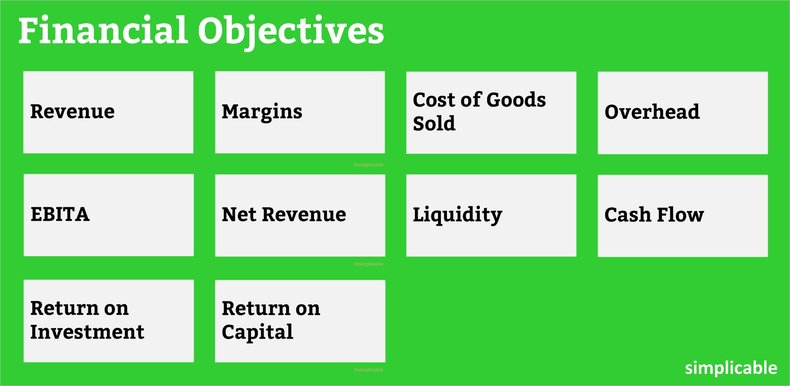

Revenue
Revenue targets as an amount or growth rate. For example, a sales team with a revenue target of $34 million representing growth of 7% over the same quarter last year.Margins
The difference between your revenue and your costs. For example, a firm with a target of 22% gross margins and 6.5% net margins.Cost of Goods Sold
The direct costs of each unit sold. Reducing cost of goods sold is a primary way to improve gross margins.Overhead
The costs of your business that aren't directly attributable to units sold. For example, business functions such as human resources. Reducing overhead costs is a primary way to improve net margins.EBITA
Earnings before interest, taxes and amortization is a common target. In many cases, a firm that isn't profitable yet uses EBITA as a goal.Net Revenue
Net revenue can be calculated to include all the true costs of running the business including stock based compensation, interest, taxes and amortization. This represents income that can be reinvested in the business or distributed to investors as dividends.Liquidity
Liquidity is important because a firm that runs out of cash faces a large number of risks as it may default on payments and trigger actions by creditors, suppliers and counterparties. For example, a firm may have an objective to restructure its debt to establish a sustainable payment schedule.Cash Flow
A business that isn't profitable yet may focus on becoming cash flow positive.Return on Investment
Return on Investment (ROI) is a common way to measure strategies, programs, projects and other investments.Return on Capital
Return on capital employed (ROCE) is a measure of the current rate of return on the capital employed in a business.| Overview: Financial Objectives | ||
Type | ||
Definition (1) | Objectives of an organization that can be expressed in monetary terms. | |
Definition (2) | Business objectives that directly impact a firm's financial statements such as revenue and costs. | |
Related Concepts | ||






























